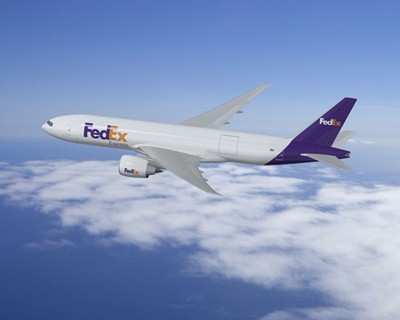Fri, Nov 16, 2012
Applauds Inclusion Of Fire Safety, But Disappointed That Cargo Pilot Fatigue Issues Not Addressed
The FDX Master Executive Council (MEC) of the Air Line Pilots Association (ALPA), Int’l is encouraged by the NTSB's publication of its Most Wanted List for 2013. This list represents the top ten advocacy priorities for the NTSB. It is designed to increase awareness of, and support for, the most critical changes needed to reduce transportation accidents and save lives.

Included in this year’s list is “Improve Fire Safety in Transportation.” Fire incidents constitute a daily concern and threat to commercial airline pilots, and in particular, commercial airline pilots who operate cargo aircraft. As was evidenced by the fatal UPS 747 accident in Dubai on September 6, 2010, in-flight fires and/or smoke incidents are very difficult to manage as they can develop and expand in a relatively short time frame. The NTSB’s inclusion of this item recognizes the need for enhanced prevention measures designed to eliminate fire and smoke incidents in addition to improvement of training and procedures for crews who experience such an event. “The FDX MEC and ALPA have worked hard on these issues for a number of years. We are hopeful that the NTSB’s inclusion of this issue will bring wider attention to this very serious issue,” commented Captain Scott Stratton, FDX MEC Chairman.
Conversely, the FDX MEC was disappointed by the removal of fatigue from the NTSB’s Most Wanted List for 2013. While fatigue has received more attention recently due to the Federal Aviation Administration’s (FAA) introduction of FAR Part 117, that effort completely ignored the conditions at United States’ cargo carriers. “Fatigue was not fixed by Part 117. Progress was made for many pilots, but an entire segment of the industry, ironically the segment of the industry known to fly in the most fatiguing environment – between midnight and 6:00 a.m., was completely left out of the fix. That’s thousands of pilots flying the nation’s cargo every night of the year. If anything, the failure to include all commercial pilots in Part 117 demonstrates that we are still not close to understanding the dangers that fatigue poses to everyone in or outside of the aircraft,” said Captain Stratton. “The fight to expand fatigue protections continues with legislative
efforts like The Safe Skies Act of 2012 as represented in the House of Representatives as H.R. 4350 and in the Senate as S. 3263, but the NTSB should have maintained fatigue as a top ten risk with so many pilots excluded from Part 117.”
More News
Sikorsky UH-60 Black Hawk Helicopter Collided With An Unregistered DJI Mavic 3T Unmanned Aerial Vehicle On July 7, 2025, about 1557 central daylight time, an unregistered Sikorsky >[...]
“After considering the measures taken, minimum liquidity covenants in the Company's current debt obligations and cash flows to maintain current operational obligations requir>[...]
Ground Clutter A pattern produced on the radar scope by ground returns which may degrade other radar returns in the affected area. The effect of ground clutter is minimized by the >[...]
Aero Linx: Warbirds of America The EAA Warbirds of America, a division of the Experimental Aircraft Association in Oshkosh, Wisconsin, is a family of owners, pilots and enthusiasts>[...]
Also: Louisville UPS Crash Aftermath, Taiwan Boosts Pilot Pool, Spartan Acquires, DON’T MISS the MOSAIC Town Hall! This three-day Affordable Flying Expo brings together indoo>[...]
 NTSB Prelim: Sikorsky UH60 Sikorsky UH-60
NTSB Prelim: Sikorsky UH60 Sikorsky UH-60 Aero-News: Quote of the Day (11.13.25)
Aero-News: Quote of the Day (11.13.25) ANN's Daily Aero-Term (11.13.25): Ground Clutter
ANN's Daily Aero-Term (11.13.25): Ground Clutter ANN's Daily Aero-Linx (11.13.25)
ANN's Daily Aero-Linx (11.13.25) Airborne 11.07.25: Affordable Expo Starts!, Duffy Worries, Isaacman!
Airborne 11.07.25: Affordable Expo Starts!, Duffy Worries, Isaacman!



